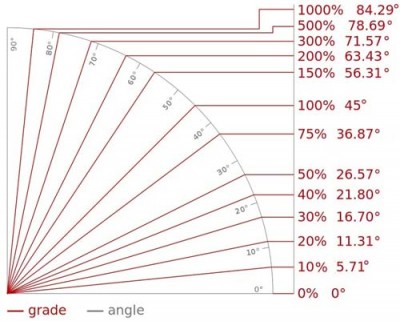Sometimes taking your training outside can be invigorating. Hill sprints are a free way of developing a serious gas tank. Maybe you started running hills because you were inspired by Rocky Balboa. Whatever reason you run your hills, it’s important to know the how, why, when, and what benefits hill sprints give to a fighter.
Hill sprints increase the ability to utilize oxygen within the fast-twitch muscle fibers increasing the capacity to maintain a high power output. They should be performed for 5-12 seconds with up to 60 seconds of recovery while keeping the heart rate under the anaerobic threshold.
Before embarking on your next hill sprint training session, you should know the stimulus you are giving your body and the subsequent adaptations that are taking place, and how they will impact your fight performance.
Why Do Hill Sprints In The First Place?
Improving aerobic abilities can be done by increasing the central or peripheral adaptations from exercise. Central adaptations meaning how much oxygen you can deliver to the muscles from the blood that is being pumped from the heart.
Peripheral adaptations involve how efficient you are at utilizing said oxygen at the muscular level so you can produce energy from the mitochondria.
Hill sprints target the oxygen utilization side of the equation and have been coined by Joel Jamieson as High Resistance Intervals.
The physiological reasoning behind performing hill sprints is to increase the number of mitochondria within the fast-twitch muscle fibers [1]. As we know, strength training already starts to shift our Type IIX fast-twitch muscle fibers to the more fatigue-resistant Type IIA muscle fibers which is positive for combat sports.
To further improve the endurance capability of the Type IIA muscle fibers, hill sprints will increase the number of these oxygen powerhouses (mitochondria) within the muscle and therefore, improve the ability of the muscle to maintain high power outputs through better oxygen utilization.

How to Dominate Every Fight with Raw, Explosive Power No One Can Match
Discover the underground blueprint that has quietly turned MMA hopefuls into legends, using nothing but sheer, brute force and bulletproof conditioning techniques.
This is what makes hill sprints unique to other forms of conditioning when targeting fast-twitch muscle fibers. Usually, you’d need high velocities to recruit the fast-twitch muscle fibers when performing conditioning training.
However, hill sprints target the fast-twitch muscle fibers through higher resistance at lower velocities.
Many may opt to perform sprints on a flat surface. For combat athletes, I would advise against that for a couple of reasons.
- If the goal is to perform high resistance intervals, there is no resistance.
- The risk of hamstring injury is much higher than when sprinting up a hill.
Can You Do Hill Sprints Every Day?

The short answer is no. For multiple reasons.
- Performing hill sprints every day means some other forms of training have to be removed from your schedule. This could be strength training or even your martial arts training which is a definite no.
- The fatigue induced from performing hill sprints every day will carry over into your other training making your sport training sub-par.
- Your body adapts to what it is given. Meaning, if you perform hill sprints every day, you will adapt quickly to the point the negatives far outweigh any sort of further positive adaptations.
- The peripheral adaptations mainly occur in your legs. Most martial arts have a large upper body component. When will you find the time to develop the upper body conditioning needed to fight?
How Steep Should The Hill Be?
You’re not going to have much choice. It is going to depend on where you live and what you have available to you. This chart gives a pretty good reference regarding how steep a hill is.

Angles are easier to work with than gradient so we will reference that. One of the steepest hills in the world is in New Zealand which has an angle of 19°. Here is a visual of that.

Safe to say, the hills in your area won’t top this and are likely to be just fine for your high resistance interval training.
What If I Don’t Have A Hill Near Me?
If you live in a flat area, you can substitute hill sprints with incline treadmill sprints or heavy sled sprints. You can even use a spin bike with high resistance. As long as you have a resistance that can reduce the speed of your sprint, you’re good to go.
When Should You Perform Hill Sprints As A Fighter?
Ideally, you would perform these further out from your fight. Hill sprints could be an addition to your training when you’re in more of a general preparation phase to supplement your martial arts training.
However, hill sprints should not replace your martial arts training. If you are only training your martial art a few times a week, time is better spent performing your conditioning as part of your sport.
If you have a very high training load of your martial art (e.g. training 1-2x a day), then performing conditioning away from the sport may be beneficial to minimize the monotony of training.
Hill sprints also make a great stimulus to introduce after a phase of “base” aerobic work such as plenty of cardiac output and extensive tempo conditioning.
How Should You Program Hill Sprints For A Fighter?

First, it’s important to give a general guideline to work off. In terms of the length of each interval, Joel Jamieson actually gives two separate durations if you refer to his videos and his book. He advises 5-6 seconds on one and 10-12 seconds on the other.
The most important thing regarding the duration is your heart rate. Heart rate should be kept under the anaerobic threshold as to predominantly emphasize the use of the aerobic processes. Anaerobic threshold generally sits somewhere around 160-170 BPM.
So if you perform an interval for 10-12 seconds and you find your heart rate exceeds this threshold, you will want to reduce your interval time.
Regarding rest periods, if you have access to a heart rate monitor (I recommend the Polar H10 chest strap. I have the older model and love it) then you can wait until your heart rate sits between 130-140 BPM before starting the next rep. Otherwise, a simple walk down recovery will suffice.
PRO TIP: walk down backward. It places less stress on the knees if you have any knee issues.
Rest should approximately be between 30-60 seconds depending on how long the interval you are running is.
A 4-6 week intervention is long enough to see some solid changes to your overall conditioning. Here is how your hill sprint progression could look. This can be performed 1-2 times per week.
Week | Interval Time/Reps | Recovery |
|---|---|---|
Week 1 | 5-6 sec x 15 | 130-140 BPM or approx. 30-40 sec |
Week 2 | 5-6 sec x 16 | 130-140 BPM or approx. 30-40 sec |
Week 3 | 5-6 sec x 17 | 130-140 BPM or approx. 30-40 sec |
Week 4 | 5-6 sec x 18 | 130-140 BPM or approx. 30-40 sec |
Week 5 | 5-6 sec x 19 | 130-140 BPM or approx. 30-40 sec |
Week 6 | 5-6 sec x 20 | 130-140 BPM or approx. 30-40 sec |
Performing the 5-6 second interval is likely the best interval length to start with. If you are in tremendous shape you may look to increase the duration of the interval so the progression looks like this instead.
Week | Interval Time/Reps | Recovery |
|---|---|---|
Week 1 | 5-6 sec x 15 | 130-140 BPM or approx. 30-40 sec |
Week 2 | 5-6 sec x 17 | 130-140 BPM or approx. 30-40 sec |
Week 3 | 5-6 sec x 19 | 130-140 BPM or approx. 30-40 sec |
Week 4 | 10-12 sec x 10 | 130-140 BPM or approx. 30-40 sec |
Week 5 | 10-12 sec x 12 | 130-140 BPM or approx. 30-40 sec |
Week 6 | 10-12 sec x 14 | 130-140 BPM or approx. 30-40 sec |
You may have to play around with the number of reps when you increase the interval length. The general goal is to hit between 15-20 reps but with the longer duration of the sprint, keeping your heart rate below the anaerobic threshold may be more difficult.
Using The Hill For Other Training Methods
Sprinting up a hill isn’t the only use of an incline. There is another training modality that targets the same adaptations as hill sprints but it is done through higher resistance AND higher volumes of work. It is called High-Intensity Continuous Training made popular by Joel Jamieson in Ultimate MMA Conditioning [1].
I love this method of aerobic training. I have used it extensively in rugby as a recovery modality two days after a match. However, I used spin bikes rather than a hill which I will explain later.
The distinct difference between high-intensity continuous training and other interval training modalities is the duration of the interval. One interval should last between 10-20 minutes!
For this particular method, you would perform lunges up the hill for the set interval length. It’s important that after each lunge, you should come to a complete stop stand up tall. You want to let the blood clear the muscle just a bit rather than sit there like it would when performing faster, continuous lunges.
Again, the heart rate should stay below the anaerobic threshold. The very short break between each lunge should help with that.
The only issue with the particular method is the eccentric contraction being performed from the multiple lunges. This may cause a lot of muscle soreness which will impact your following day's training.
It’d probably be best off performed straight after your last hard training of the day before an easy day or a day’s rest as a recovery modality while getting some extra aerobic work in.
Here is how a 4 week progression would look. You can perform this 1-2x a week.
Week | Set/Rep | Recovery |
|---|---|---|
Week 1 | 1 x 10 min | N/A |
Week 2 | 1 x 15 min | N/A |
Week 3 | 2 x 10 min | 2-3 min between sets |
Week 4 | 1 x 20 or 2 x 15 min | 2-3 min between sets |
I much prefer this method to be performed standing on a spin bike at 20-30 RPM with the resistance cranked up as high as it goes. There should be a short pause at the top of each half revolution so it’s not a continuous cycle.
You can use the same progression as presented above. I much prefer this method as you don’t have the eccentric contraction so muscle soreness isn’t an issue. In my experience, the amount of blood that gets pumped into the legs makes them feel great the following day.
References
1. Joel Jamieson. Ultimate MMA Conditioning.

